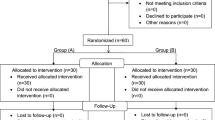Abstract
Strict selection of patients for minimally invasive percutaneous nephrolithotomy could effectively improve the success rate of surgery. This study aimed to understand the required skills and the efficacy of mini-PCNL in the treatment of five types of upper ureteral calculi. Data collected after X-ray analysis and B mode ultrasound from 633 patients with upper ureteral and renal pelvis calculi who underwent B ultrasound-guided lithotomy was reviewed, including the following: type I, upper ureteral or renal pelvis calculi with moderate hydronephrosis (154 cases); type II, upper ureteral or renal pelvis calculi with severe hydronephrosis (157 cases); type III, upper ureteral or renal pelvis calculi without hydronephrosis (61 cases); type IV, renal pelvis calculi, one or two renal calyx calculi (206 cases); and type V, renal staghorn calculi (55 cases). Operations on 611 cases were successful. The treatment method for five patients was converted to open surgery. Twelve cases were treated by indwelling double-J tube retro-catheterization and extracorporeal shock wave lithotripsy. Five patients gave up the treatment. The rate of calculus clearance was 82.3 %, and the rate of residual calculus was 17.6 %. Selective renal artery embolization was performed in nine cases. Hydropneumothorax occurred in nine cases. No intestinal fistula occurred, and no patient had to undergo nephrectomy. The difficulty and the curative effect of the operation were different because the types of calculi varied. Selection of the procedure based on the different types of calculi could effectively improve the success rate of the procedure, reduce complications, and shorten the learning curve.
Similar content being viewed by others
References
Tanriverdi O, Boylu U, Kendirci M, Kadihasanoglu M, Horasanli K, Miroglu C (2007) The learning curve in the training of percutaneous nephrolithotomy. Eur Urol 52:206–211
de la Rosette JJ, Laguna MP, Rassweiler JJ, Conort P (2008) Training in percutaneous nephrolithotomy—a critical review. Eur Urol 54:994–1001
Allen D, O’Brien T, Tiptaft R, Glass J (2005) Defining the learning curve for percutaneous nephrolithotomy. J Endourol 19:279–282
Mitropoulos D, Artibani W, Graefen M, Remzi M, Rouprêt M, Truss M (2012) Reporting and grading of complications after urologic surgical procedures: an ad hoc EAU guidelines panel assessment and recommendations. Eur Urol 61:341–349
Seitz C, Desai M, Häcker A, Hakenberg OW, Liatsikos E, Nagele U, Tolley D (2012) Incidence, prevention, and management of complications following percutaneous nephrolitholapaxy. Eur Urol 61:146–158
Skolarikos A, de la Rosette J (2008) Prevention and treatment of complications following percutaneous nephrolithotomy. Curr Opin Urol 18:229–234
Srivastava A, Singh KJ, Suri A et al (2005) Vascular complications after percutaneous nephrolithotomy: are there any predictive factors? Urology 66:38–40
Mathieu J, Schulman CC, Struyven J (1978) Percutaneous embolic occlusion of an acquired bleeding intrarenal aneurysm. Eur Urol 4:212–213
Boon JM, Shinners B, Meiring JH (2001) Variations of the position of the colon as applied to percutaneous nephrostomy. Surg Radiol Anat 23:421–425
Osman M, Wendt-Nordahl G, Heger K, Michel MS, Alken P, Knoll T (2005) Percutaneous nephrolithotomy with ultrasonography-guided renal access: experience from over 300 cases. BJU Int 96:875–878
Basiri A, Ziaee AM, Kianian HR, Mehrabi S, Karami H, Moghaddam SM (2008) Ultrasonographic versus fluoroscopic access for percutaneous nephrolithotomy: a randomized clinical trial. J Endourol 22:281–284
Falahatkar S, Neiroomand H, Enshaei A, Kazemzadeh M, Allahkhah A, Jalili MF (2010) Totally ultrasound versus fluoroscopically guided complete supine percutaneous nephrolithotripsy: a first report. J Endourol 24:1421–1426
Feng MI, Tamaddon K, Mikhail A, Kaptein JS, Bellman GC (2001) Prospective randomized study of various techniques of percutaneous nephrolithotomy. Urology 58:345–350
Zanetti G, Paparella S, Trinchieri A, Prezioso D, Rocco F, Naber KG (2008) Infections and urolithiasis: current clinical evidence in prophylaxis and antibiotic therapy. Arch Ital Urol Androl 80:5–12
Gonen M, Turan H, Ozturk B, Ozkardes H (2008) Factors affecting fever following percutaneous nephrolithotomy: a prospective clinical study. J Endourol 22:2135–2138
Tomaszewski JJ, Smaldone MC, Schuster T, Jackman SV, Averch TD (2010) Factors affecting blood loss during percutaneous nephrolithotomy using balloon dilation in a large contemporary series. J Endourol 24:207–211
Turna B, Nazli O, Demiryoguran S, Mammadov R, Cal C (2007) Percutaneous nephrolithotomy: variables that influence hemorrhage. Urology 69:603–607
Zhong W, Zeng G, Wu K, Li X, Chen W, Yang H (2008) Does a smaller tract in percutaneous nephrolithotomy contribute to high renal pelvic pressure and postoperative fever? J Endourol 22:2147–2151
Troxel SA, Low RK (2002) Renal intrapelvic pressure during percutaneous nephrolithotomy and its correlation with the development of postoperative fever. J Urol 168:1348–1351
Nagele U, Horstmann M, Sievert KD et al (2007) A newly designed amplatz sheath decreases intrapelvic irrigation pressure during mini-percutaneous nephrolitholapaxy: an in-vitro pressure-measurement and microscopic study. J Endourol 21:1113–1116
Acknowledgement
This study was supported by the 2013 Project from the Science and Technology Bureau, Quanzhou City, Fujian Province, China; 2010 Talents Project from the Organization Department, Quanzhou City, Fujian Province, China; and 2013 Project from the Science and Technology Bureau, Shishi City, Fujian Province, China (No.2013SK015).
Ethics Committee Approval
This study was conducted with approval from the Ethics Committee of Shanghai Jiao Tong University School of Medicine. Written informed consent was obtained from all participants.
Author information
Authors and Affiliations
Corresponding author
Additional information
Si-Ping Gu and Guo-Hua Zeng are co-first authors.
Rights and permissions
About this article
Cite this article
Gu, SP., Zeng, GH., You, ZY. et al. Types of Renal Calculi and Management Regimen for Chinese Minimally Invasive Percutaneous Nephrolithotomy. Indian J Surg 77 (Suppl 3), 872–876 (2015). https://doi.org/10.1007/s12262-014-1043-4
Received:
Accepted:
Published:
Issue Date:
DOI: https://doi.org/10.1007/s12262-014-1043-4




